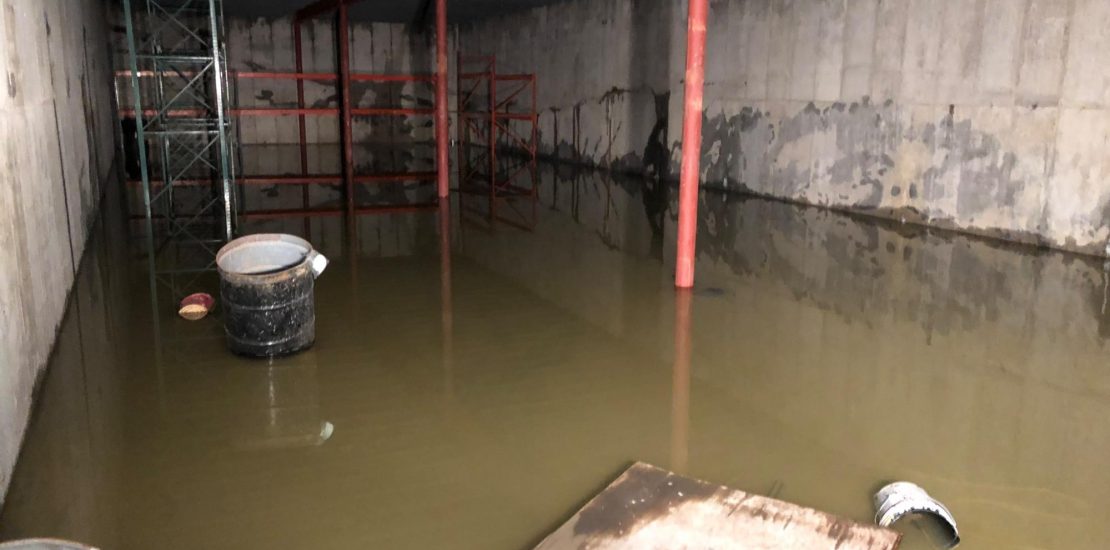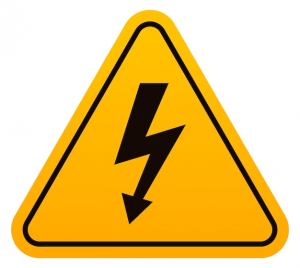- February 13, 2024
- Posted by:
- Category: Basement Questions

Experiencing a flooded basement can be a daunting and damaging event for any homeowner. This guide provides a step-by-step approach to safely and effectively handle basement flooding, including preventive measures and advanced solutions for water damage restoration.
Understanding the Risks of Basement Flooding
A flooded basement can result from various causes such as burst pipes, poor drainage, and rising groundwater. Understanding these risks is crucial in both addressing the immediate problem and preventing future occurrences.
Identifying the Source: Determining the cause of basement flooding is crucial for effective management. Common sources include burst pipes, which can flood basements rapidly due to the high-pressure water flow. Heavy rainfall can overwhelm drainage systems, leading to water seepage into the basement. Malfunctioning sump pumps, which are designed to remove accumulated water, can also lead to flooding if they fail during heavy rainfall or rapid snowmelt. Accurately identifying the source enables homeowners to undertake the appropriate corrective measures, such as repairing plumbing, improving drainage, or servicing the sump pump.

Health and Safety Concerns: The health and safety risks associated with basement flooding are significant. Floodwaters can contain various hazardous materials, including raw sewage, which poses a risk of bacterial and viral infections. Chemical contaminants, such as pesticides or industrial runoff, can also be present, especially in areas near agricultural or industrial zones. It’s essential to wear protective gear, including waterproof boots, gloves, and face masks, during cleanup to minimize direct contact with these harmful substances. In cases of severe flooding, it’s advisable to seek professional help to ensure safe and effective cleanup. You must also have a dehumidifier properly sized for your basement otherwise you may find mold issues not only in the basement but in the upper areas in the home including the attic. Through a concept called “the stack effect” mold will follow the air flow up through the walls and into the attic.
Immediate Steps for Floodwater Removal
Power Safety: Turning off the power before addressing basement flooding is crucial for preventing electrical hazards. Water is a powerful conductor of electricity, and stepping into a flooded basement with an active electrical system can lead to serious injury or even fatality. If you can’t safely reach the circuit breaker due to water or obstruction, it’s imperative to call a professional electrician. They can safely disconnect the power, ensuring a secure environment for you to begin the cleanup process.

Water Extraction: Quick removal of water from your basement is critical in minimizing damage. Wet/dry vacuums are effective for small-scale flooding, while sump pumps are better suited for more significant water accumulation. Acting swiftly is vital as mold can start developing within 48 hours of water exposure. Removing water as quickly as possible reduces the likelihood of mold growth and the resultant health risks and structural damage it can cause.
Drying Out: After extracting the water, drying out the basement is the next crucial step. Using large fans enhances air circulation, speeding up the drying process. Additionally, a high-quality dehumidifier can significantly reduce moisture levels, which is essential for preventing mold growth and potential structural damage. Continuously monitoring and adjusting humidity levels ensures a thorough drying process, safeguarding your basement against lingering moisture-related issues.
Cleaning and Damage Assessment
Once the water is removed:
Removing Wet Items: After a flood, it’s crucial to promptly remove all wet items from the basement. This includes furniture, carpets, and personal belongings, which should be taken to a well-ventilated area to dry. Porous materials like drywall and insulation are particularly susceptible to mold growth and should be removed and disposed of quickly. These materials can absorb water rapidly, and the longer they remain damp, the higher the risk of mold development, which can lead to health issues and further damage.
Thorough Cleaning: Once all wet items are removed, and the basement is dry, a thorough cleaning is essential to remove any remaining dirt, grime, and contaminants that the floodwater may have left behind. Using appropriate, non-abrasive cleaners for different surfaces is crucial to ensure effective cleaning without causing damage. In cases where mold is already present or if the flooding was extensive, it may be necessary to hire a professional mold remediation service. These professionals can safely and effectively handle large-scale mold issues, ensuring your basement is not only clean but also healthy to occupy.
Long-term Solutions for Basement Waterproofing
Investing in waterproofing solutions is key to preventing future flooding:
Sump Pump Installation: A reliable sump pump is a critical component in any basement waterproofing strategy, especially in areas prone to heavy rainfall or high water tables. Opting for a sump pump with a battery backup is particularly wise, as it ensures the pump remains operational even during power outages – a common occurrence during severe storms. This setup guarantees continuous protection against basement flooding, keeping your space dry under various conditions.
Perimeter Drainage Systems: The installation of a perimeter drainage system acts as a first line of defense against basement flooding. This system, placed around the exterior of the basement, helps in diverting water away from the foundation, thus reducing the risk of water seepage and flooding. Effective perimeter drainage is essential in areas where surface water accumulation is a frequent issue, providing an extra layer of protection by channeling water away efficiently.
Smart Vent Foundation Flood Vents: In high-risk flood areas, safeguarding the foundation from hydrostatic pressure is crucial. Smart Vent Foundation Flood Vents are designed to alleviate this pressure. These vents allow water to flow through them, equalizing the pressure on both sides of the foundation walls. This technology not only protects the structural integrity of the foundation but also contributes to the overall resilience of the house in flood-prone regions.
Understanding and Preventing Future Floods
Post-cleanup, it’s important to assess whether the flood was a one-time event or indicative of an ongoing problem:
Regular Inspections: Regular checks of plumbing, foundation, and drainage systems can help identify potential issues before they lead to flooding.
Community and Environmental Factors: Stay informed about flood risks in your area and consider community-level flood prevention measures.
For more detailed advice and professional assistance in waterproofing and flood damage restoration, visit The Basement Kings.
